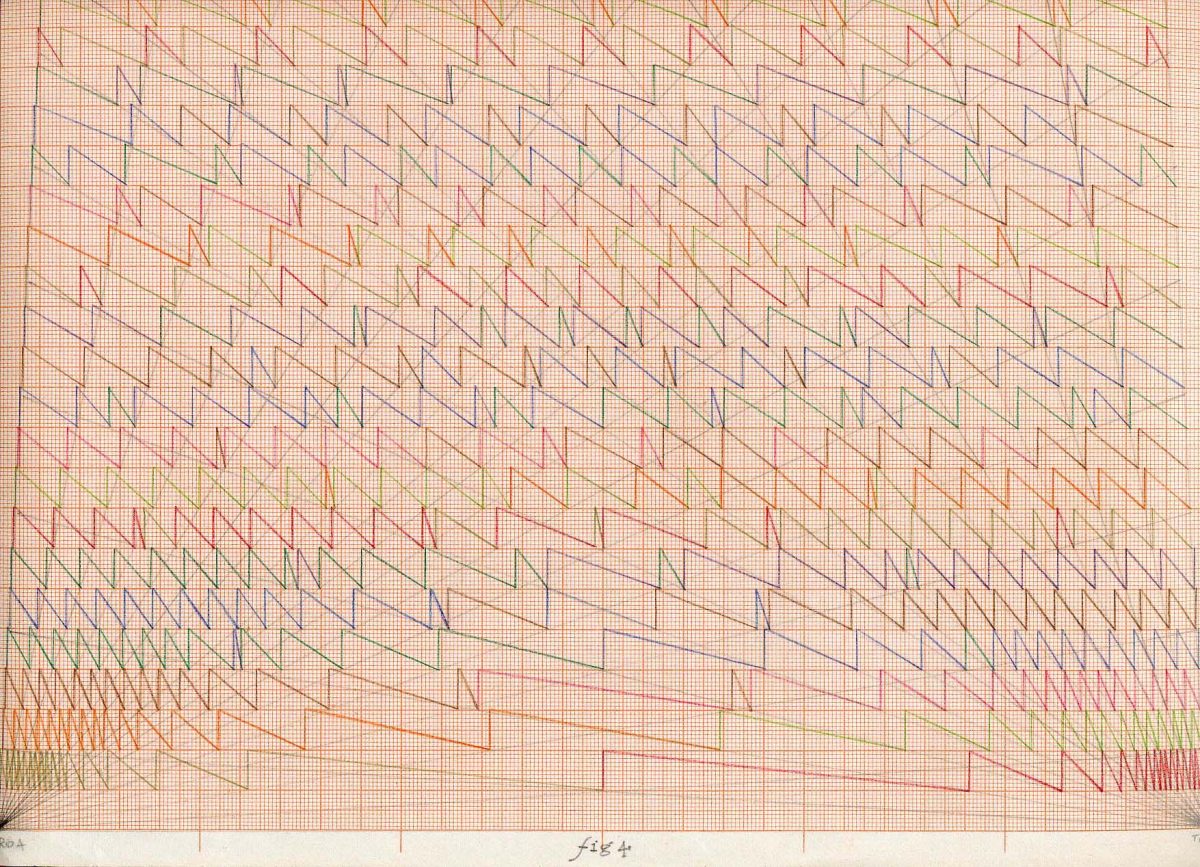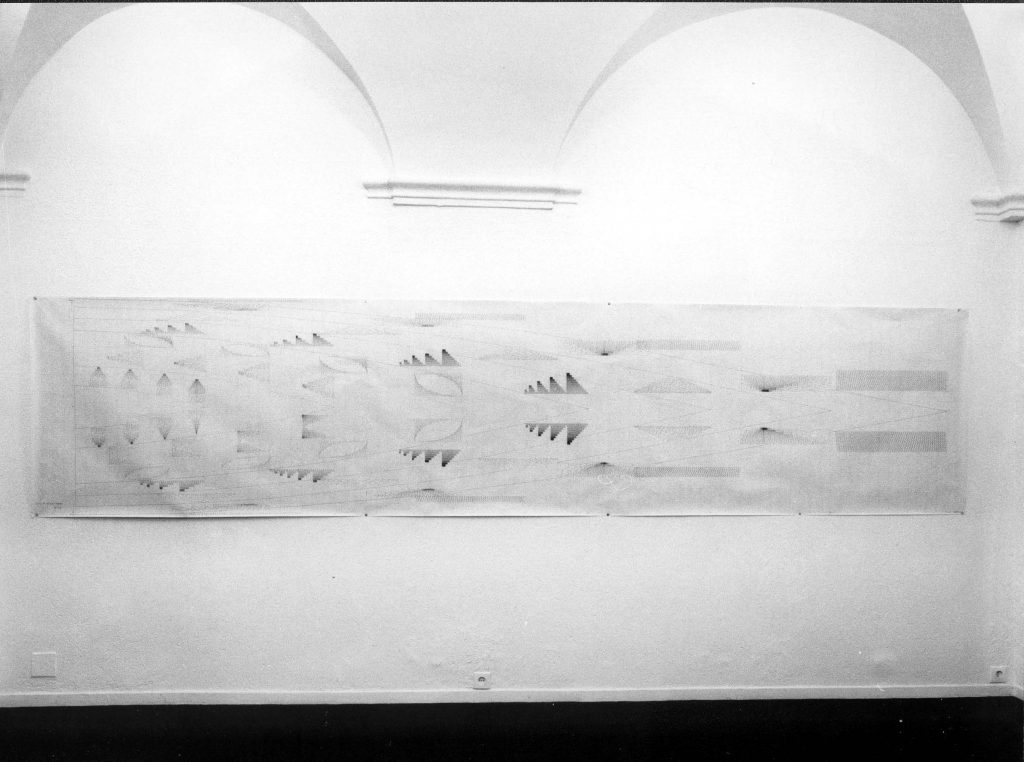(1981-82) sound synthesis [8’ 06″]
Premiered at International Computer Music Conference, Palazzo del Cinema, Venezia, September 27th 1982
This work utilizes a timbre space built on three dimensions:
- spectral energy distribution;
- spectral fluctuation;
- (coinciding with I.) high frequency energy which precedes the full attack of the tone.
The sound synthesis models used are simple waveshaping and FM; this one just for the third dimension (it adds the high-frequency energy needed).
The macrostructure of the composition is generated by the projection, on a two-dimensional space with frequency as the ordinate and time as the abscisa, of an architectural structure plan. By means of the ‘slowing perspective’ technique I achieved the desired temporal extension. As regards the choice and the treatment of the macrostructure and its internal organization, they depend exclusively on my compositional parameters: symmetry, regularity, direction, velocity, focus and flight point (terms borrowed fron the visual arts world). The internal temporal organization of the polyphonic rhythmic structures that make up the macrostructure is given by the position of the focus. This one is determined too by the parameters above mentioned.
Each structure takes the timbre that occupies the corresponding position in the timbre space.
The composition has been realized with the facilities of the Centro di Sonologia Computazionale, University of Padova.



